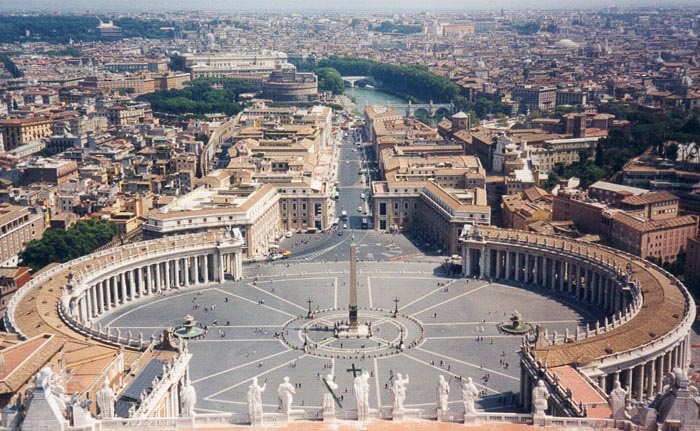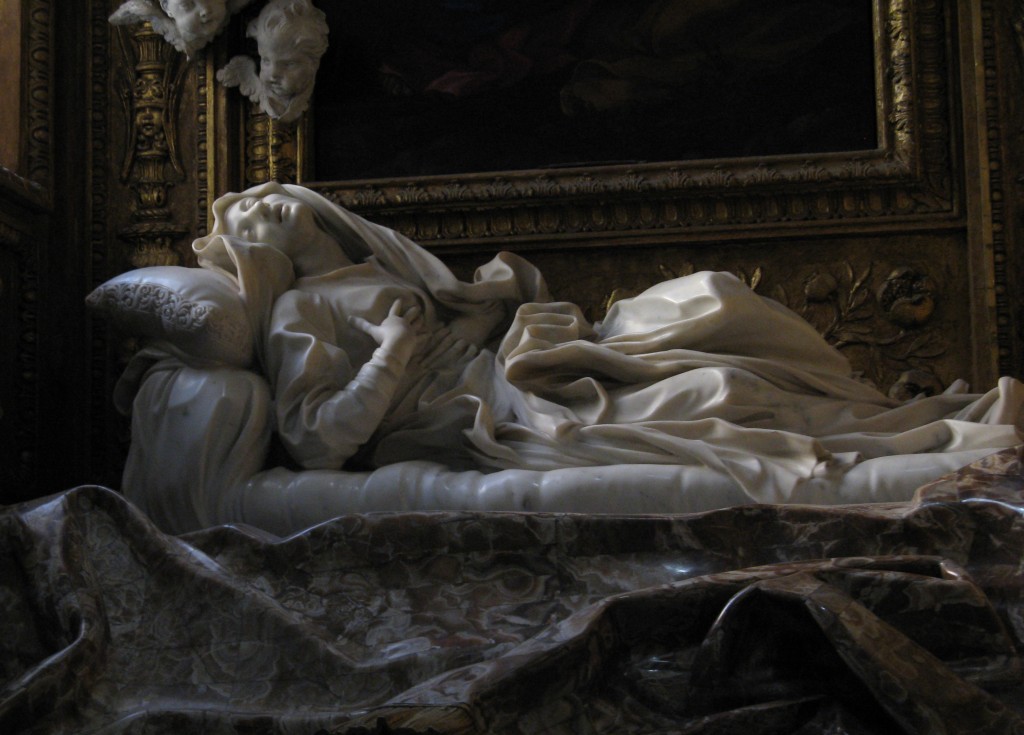In his fountain design Bernini returned to the Counter Reformation theme of the church triumphant, spreading through four continents , which were represented by personifications of four rivers- the Danube, supporting the papal coat of arms and accompanied by a lion; the Nile, with its head covered by a cloth- because its source had remained so long undiscovered; the Ganges, with an oar because so much of it is navigable; and the Rio de la Plata, with coins representing the wealth of the America’s. The pope was pleased with the gushing rivers in their tropical decor of palm trees and fronds, but Bernini in later life came to hate the fountain and would have the shutters of his carriage closed when he passed it.

—Baroque Italy
The superb symmetry of Bernini’s colonnade can be appreciated from the top of St. Peter’s dome. —Read More:http://interzone.com/~cheung/World/Ita/ItBaro.html
It was thanks to Bernini that the next pope, Alexander VII, went down in history as the papa di grande edificazione- the pope of great buildings. Under his pontificate, Bernini designed the most important architectural creation of the Roman seventeenth century, the colonnade of St. Peter’s. Bernini considered architecture a sideline, although he boasted that sculptors made the best architects, because they were students of the human body and the classical orders, Doric and Ionic, were based on human proportions. He went to work designing an enclosure to pen in the crowds that came for papal bendictions, the visitors to the city, the urbs, who represented the rest of the world, orbis. His two free standing colonnades embraced the faithful in a pincerlike movement, at once welcoming and protecting them. For most if not all Catholics the physical center of the church, more than Jerusalem or Nazareth, is this great keyhole where the Vicar of Christ resides.

The Blessed Ludovica Albertoni, a Roman widow who gave all her wealth to the poor, was portrayed by Bernini in the throes of death. It is a superb, emotion rousing depiction of her with blanched face and dying gaze. Image:Wiki
Works on the colonnade was interrupted in 1665 by a summons from Louis XIV and the Cavaliere’s first and last visit to a foreign court. The Sun King, then only twenty-seven, had already initiated a building program suitable to his fame. He wanted Bernini to design the eastern facade of the Louvre. At the same time, the invitation was part of the monarch’s policy to diminish papal prestige. Already in 1662 the Duc de Crequi, French ambassador to the papal court, had shamed the pope by forcing him to dismiss his guard and threatening French occupation of the papal enclave at Avignon.
To pluck the world’s most famous living artist from the most important task of his career was another affront to Alexander VII. Though delicately phrased, the king’s invitation was not of the sort that could be just as delicately turned down. Bernini could not even plead his age which was sixty-six…. ( to be continued)





 COMMENTS
COMMENTS